Sifting through earth removed from holy site gleans rare artifacts going back thousands of years, but Prof. Gabriel Barkay’s methods stir controversy
Ilan Ben Zion
Source - http://www.timesofisrael.com/temple-mount-project-yields-treasure-but-unearths-conflict/
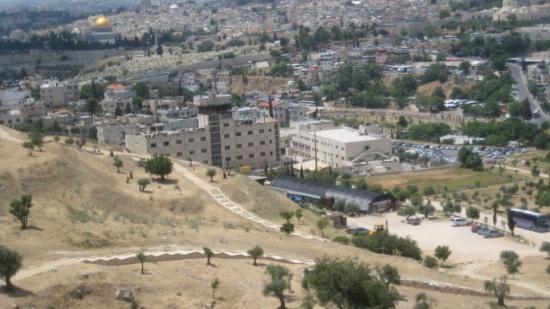
The Emek Tzurim National Park and the Temple Mount Sifting Project site, with the Dome of the Rock in the background (photo credit: Ilan Ben Zion/Times of Israel staff)
For three of the world’s faiths, the Temple Mount bears special sanctity and significance. For archaeologists, the 3,000-year-old holy site is both an El Dorado and a Holy Grail, for the Israeli-Palestinian conflict precludes a scientist’s pick and shovel ever breaking its ground. But an improbable turn of events has allowed historians a glimpse into the monument’s mighty bowels
On the slopes below the Hebrew University’s campus on Mount Scopus, archaeologists and volunteers sieve through heaps of earth that were removed from the Temple Mount in the 1990s, and seek to extract bits and pieces of Jerusalem’s long history. The soil they sift through is fill from the Temple Mount — truckloads of earth and detritus that, until the late 1990s, was packed into the gigantic 35-acre box on which the Dome of the Rock and al-Aqsa Mosque stand and Herod’s Temple once stood.
At the far end of a fabric-roofed Quonset hut, home of the Temple Mount Sifting Project, Professor Gabriel Barkay rummaged through a small heap of tiny potsherds set on a low table. He removed his glasses and stared at a tiny piece of brown clay — one of thousands plucked from the soil — and wiped some dirt from its surface. He’s a grandfatherly sort, with a salt-and-pepper beard and a gravelly voice tinged with an Old World accent in English. Barkay, currently with Bar-Ilan University, got his start in archaeology on a salvage dig on Mount Zion when a road was paved for Pope Paul VI in 1964.
“What we do here is the result of certain political developments,” Barkay explained as we sat in the shade.
The Jerusalem Islamic Waqf, the institution overseeing the al-Aqsa Mosque compound, carried out excavations on the Temple Mount between 1996 and 1999 as part of the construction of a subterranean mosque in an area known as Solomon’s Stables. Tens of thousands of tons of dirt — roughly 400 truckloads — were excavated by heavy machinery, without the supervision of archaeologists, and were dumped outside the Old City.
Barkay called the act a “barbaric thing” and “a crime against human civilization” and compared the Waqf’s actions to those of the Taliban in destroying the Buddhas of Bamiyan.
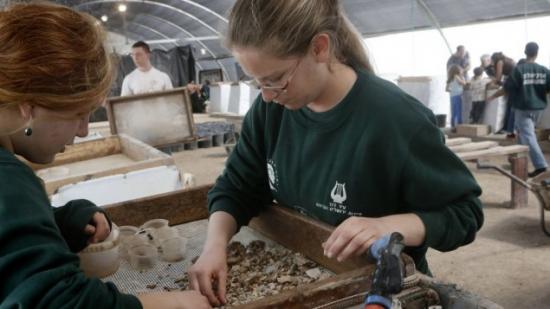
Volunteers and employees pick through finds at the Temple Mount Sifting Project in Emek Tzurim, located on Mt Olives, near Jerusalem’s Old City on March 10, 2014. (photo credit: Miriam Alster/FLASH90)
The piles of earth sat in the Kidron Valley for over four years, until Barkay decided to launch the project in 2004. Its aim: to extract artifacts from the removed soil of the Temple Mount. He explained that since the layering of soil — its stratigraphy, a key element to dating artifacts — is no longer intact, they assume a reverse stratigraphy: The trucks dumped the uppermost layers of soil first, then heaped deeper layers atop it.
Shortly after their sifting work began, the project was “adopted” (as Barkay put it) by the Ir David Foundation in 2005. Ir David, also known by its Hebrew acronym Elad, has been criticized for its stated agenda of Judaizing areas of East Jerusalem with historic Jewish links (an aim euphemistically referred to on its website as “residential revitalization”), and emphasizing Jewish historical narratives at the expense of over 1,300 years of Islamic history.
Elad agreed to cover the expenses of operating the sifting project, but Barkay’s research lab remains financed by private donations.
Employees of the sifting project bring the earth to the site in Emek Tzurim and run it through an initial dry sift, then volunteers hose buckets of earth through a sieve in a method developed by Barkay called wet sifting. Over a quarter of a million volunteers from around the world have taken part in hosing down bucketfuls of soil from the Temple Mount and picking out minute objects since the project began in 2004.
What remains is typically just pebbles, rocks and bits of modern refuse, but the dirt is also peppered with bits of antiquity. The objects are cleaned, photographed, digitized, cataloged, and sent to a Jerusalem lab where the senior staff, headed by Barkay and Professor Zachi Dvira.
Most of the tens of thousands of items found in the pans by volunteers are small — an abundance of coins, innumerable fragments of clay, figurines, brightly colored mosaic tiles and beads, arrowheads, inscribed stones and bits of bone. In explaining the trove of tiny artifacts found, Barkay made regular reference to biblical and post-biblical characters in corresponding the items to time periods: clay figurines smashed during the time of the just kings of Judah, seal impressions with the names of priests mentioned in the book of Jeremiah and coins minted during the rein of King Antiochus IV Epiphanes, who fought the Maccabees. The relics catalog the history of Jerusalem from antiquity through the modern era, he explained.
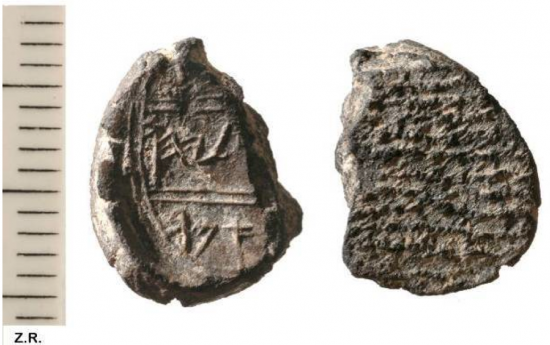
A 6th century BCE stamp seal bearing the name of a Judean official believed to be Galiyahu son of Imer – Photo : The Temple Mount Sifting Project
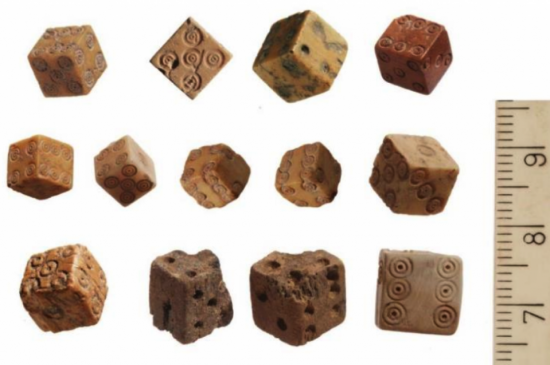
Roman-era ivory dice - Photo : The Temple Mount Sifting Project
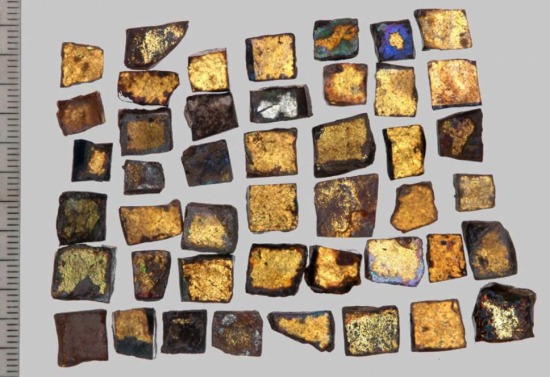
Gilt mosaic tiles that once decorated the Dome of the Rock on the Temple Mount - Photo : The Temple Mount Sifting Project
PART.2